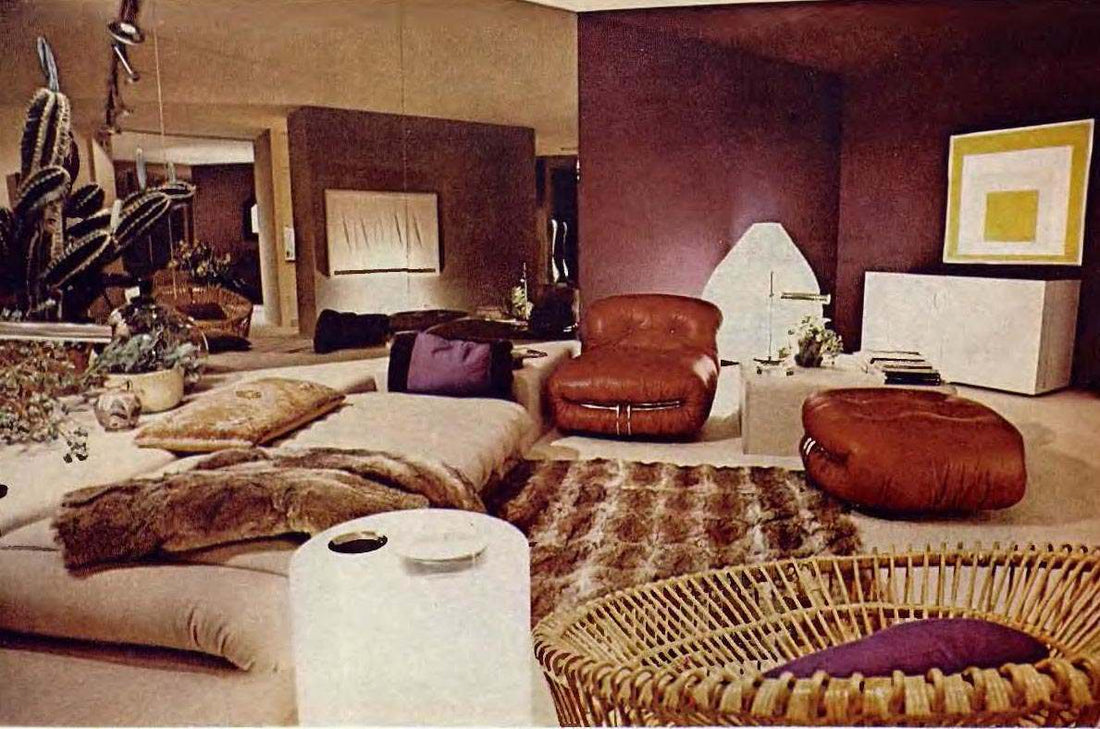
A Visual Guide to Vintage Furniture Styles by Decade
If you’ve ever stood frozen in a thrift store aisle wondering if that gorgeous wooden armchair is mid-century modern or just mid-life crisis, this one's for you.
Welcome to your crash course in vintage furniture by decade—a visual guide to everything from claw feet to cantilevered chrome. Grab a cup of coffee, polish up your Pinterest board, and prepare to learn just enough to impress people at estate sales and Instagram captions alike.

image credit: Émile-Jacques Ruhlmann
1920s – Art Deco Decadence
Key Features: Geometric lines, lacquer finishes, exotic woods, shiny metals
Buzzwords: Glamorous, machine-age, Gatsby-vibes
Think: If furniture could wear a tuxedo, it would look like a 1920s sideboard.
Art Deco furniture is where symmetry met jazz. It was rich, dramatic, and just a little bit full of itself. Look for high-gloss finishes, bold angles, and inlays using luxurious materials like ebony, ivory, or chrome. It’s where craftsmanship met machine-made precision—think sleek meets swagger.

image credit: Pamono
1930s – Streamline Moderne
Key Features: Rounded edges, tubular steel, horizontal lines
Buzzwords: Futuristic (for its time), optimistic, streamlined
The '30s toned down the Deco dazzle and leaned into the aerodynamic—literally. Picture furniture that looks like it’s going 60 mph standing still. Tubular metal arms on sofas, curving corners, and a whole lot of horizontal emphasis.
This era is often overshadowed, but it’s a hidden gem: sleek, modern, and oddly comforting. It’s like Deco took off its heels and got practical.
1940s – Wartime Wood & No-Frills Function
Key Features: Solid wood, simple lines, patriotic restraint
Buzzwords: Practical, transitional, humble
War changes everything—including your coffee table.
With materials rationed and tastes subdued, 1940s furniture leaned traditional and durable. It was about function over flair. If you see clean lines, warm-toned woods (mahogany, walnut), and a general "don’t show off" vibe—it’s probably a '40s piece. This decade paved the way for the atomic optimism of what came next…
1950s – Mid-Century Modern (MCM) Mania
Key Features: Tapered legs, organic shapes, teak galore
Buzzwords: Minimal, atomic, Scandinavian-ish
The crown jewel of vintage furniture obsession.
MCM is as ubiquitous on Instagram as latte art, and for good reason: it’s gorgeous. Clean lines, futuristic silhouettes, and wood that just glows. Teak, rosewood, and walnut were the holy trinity, and designers like Eames, Saarinen, and Wegner were the cool kids at the party.
1960s – Space-Age Pop & Psychedelic Chic
Key Features: Plastic, pod chairs, mod colors (orange! avocado! mustard!)
Buzzwords: Groovy, mod, funky
Furniture in the 1960s wanted to break free. From tradition, from gravity, and possibly from common sense.
This was the golden age of experimental design—think glossy fiberglass chairs, chrome legs, and wild colors that make your pupils dilate. Pop art influences were everywhere. Comfort was... negotiable. But the vibes? Immaculate.

1970s – Earth Tones & Eclectic Energy
Key Features: Rattan, macramé, chunky lines, wood paneling
Buzzwords: Boho, funky, laid-back
The '70s were the ultimate mash-up: part nature retreat, part disco club, part Brady Bunch basement. Furniture turned plush, earthy, and unbothered. Orange and brown ruled the palette, and materials like rattan and cane strutted back onto the scene with sun-kissed confidence.
Modular sofas sprawled lazily across sunken living rooms, while funky mushroom lamps lit up avocado-green side tables. It was weird, wonderful, and very back in style.

image credit: Kasia Gatkowska
1980s – Postmodern Excess
Key Features: Memphis design, lacquered finishes, pastel overload, zigzags
Buzzwords: Flashy, ironic, radical
The 1980s weren’t here to be subtle. Furniture design turned ironic and performative, with wacky angles, bold colors, and unexpected combinations. The Memphis Group basically said, “What if furniture was a cartoon?”—and somehow people said yes.
Sofas became sculptural, color palettes featured pink and teal with reckless abandon, and laminate was a statement. A glorious, ridiculous, fabulous statement.
Or better yet—mix them up. The real secret to styling vintage furniture? Ignore the rules, trust your eye, and find pieces that make you feel like the main character.
-Juliette



